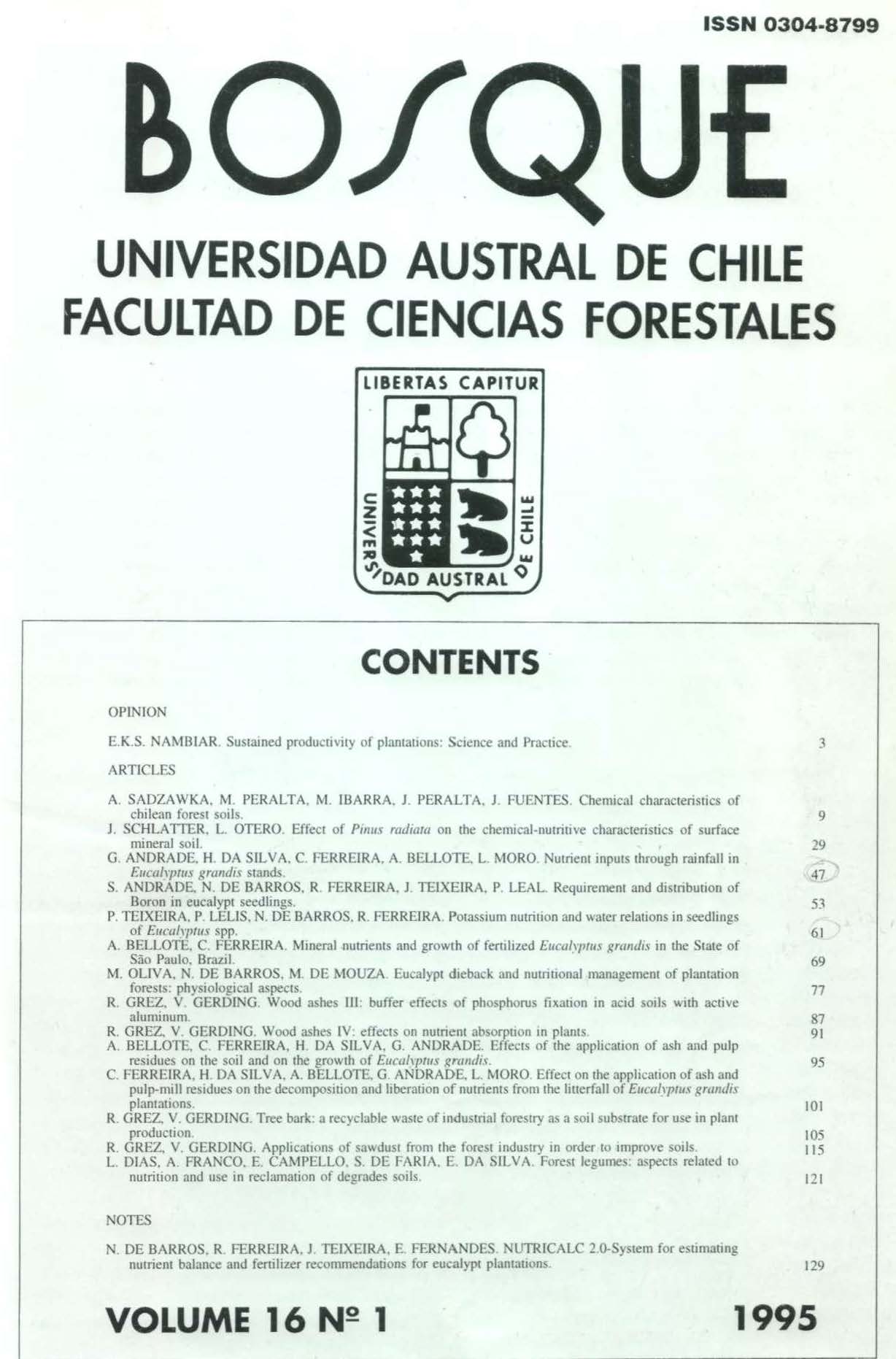Effect of the application of ash and pulp-mill residues on the decomposition and liberation of nutrients from the litterfall of Eucalyptus grandis plantations
Main Article Content
Abstract
Litterfall is an important source of mineral nutrients for trees, especially in nutrient poor sandy soils. The nutrient cycling is dependent on the quality and quantity of the deposited material, and also on its decomposition rate. This paper addresses the nutritional effects of applying ash and pulp-mill residues to Eucalyptus grandis plantations on nutrient poor sandy soils (Orthic Ferralsol) in the state of São Paulo, Brazil. The ash and pul-mill residues increased three-fold the rate of decomposition of the eucalypt litterfall, thus largely enhancing the quantity of available nutrients in the soil. This can explain the large increases in wood volume obtained by the application of such products. Litterfall deposition and decomposition were responsible for at least 54% of N, 40% of P, and 15% of the K annual accumulation in the forest biomass of the treated plots.

